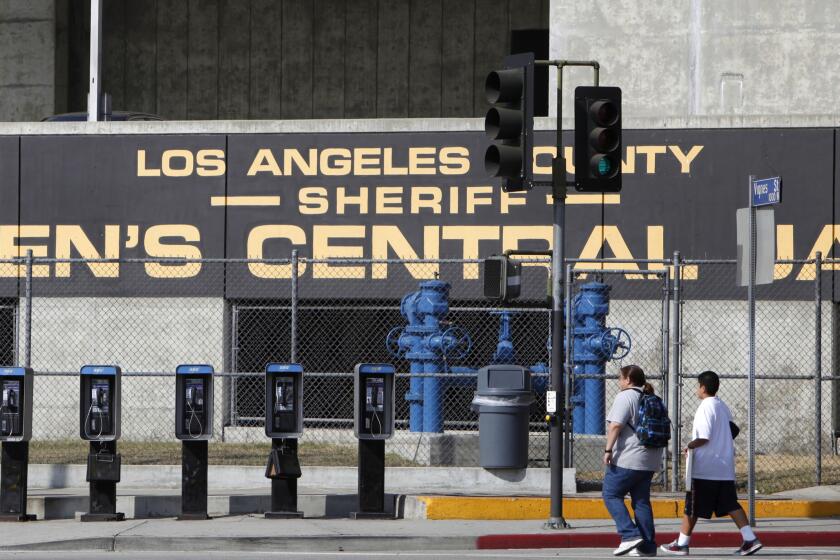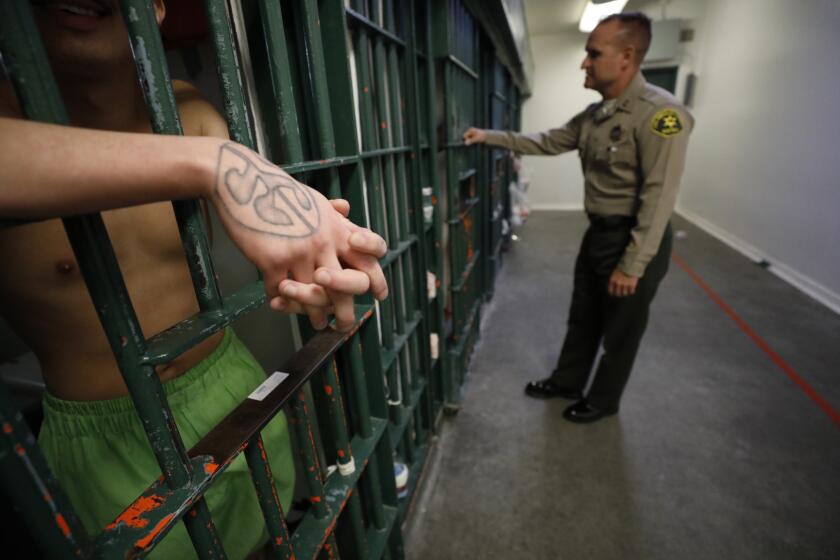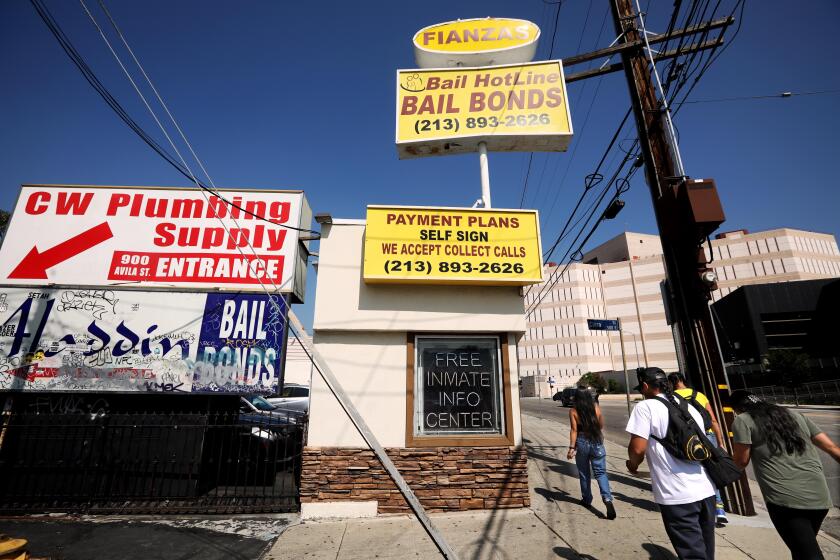How the court’s bail reform plan could go wrong. How to keep it going right

- Share via
The procedure for handling criminal suspects in Los Angeles County between their arrest and their first appearance in court several days later changed on Sunday. No longer are most suspects held in jail during that period or required to pay money bail in order to be released.
Instead, people accused of less serious and nonviolent crimes will be cited or booked and released or briefly held while a magistrate — a judge who won’t see or hear from the suspects — considers the suspects’ risk of causing harm or failing to come to court, and either sets release conditions or orders them to jail until the arraignment, their first hearing in front of a judge.
For the record:
11:16 a.m. Oct. 6, 2023A previous version of this editorial said police in recent weeks convinced the court to allow officers to request that any suspect be referred to a magistrate, even if that suspect is eligible for release after citing and booking under the new bail schedules. In fact, police already had the power to do that under the previous bail and release protocols and continue to have it under the new protocol.
Ending Cash Bail
On Oct. 1 Los Angeles County transitions to a new way of administering pre-arraignment justice that doesn’t use cash bail for most crimes.
The new system is a big step forward for justice. No longer will decisions about people’s liberty in the first few days after arrest be based on whether they could afford to pay the court or a bail bond agent.
But there are at least two ways things could go wrong.
On Friday, just two days before the new program began, 12 cities sued to block it. Others are expected to join them in coming days.
These cities and their police departments appear unconvinced by, or unaware of, scholarly studies in multiple jurisdictions that show eliminating money bail actually reduces crime and increases the likelihood of defendants appearing for trial.
Bail-or-jail upon arrest will largely disappear from L.A. County, correcting an injustice yet raising concerns at a time of high-profile retail thefts. First in a series.
Police in recent weeks convinced the court to allow officers to request that any suspect be referred to a magistrate, even if the alleged crime calls for just a citation or booking and release.
That could pose a problem. If every officer seeks jail after arrest for every suspect, and every magistrate gives the police the benefit of the doubt, the new program will fail. Jails could refill with people accused of low-level crimes that the court already decided don’t warrant incarceration before arraignment.
The program could also fail if suspects released with citations fail to show up for court, or commit new crimes. The public will lose faith and demand a return to the old system, despite its many failures.
L.A. officials knew the bail schedules they used to lock people up before trial were unjust, but they didn’t act. Now a ruling will force them to do so.
When considering solutions to these challenges, it’s important to remember that the choices at arrest are not binary — money bail or release without conditions. There can be release conditions unrelated to money. Defendants might be ordered to stay away from alleged victims and witnesses, for example, or be required to report to work or substance abuse treatment to maintain their freedom in the several days before arraignment.
Los Angeles County government has an important role to play as well. It must provide services to defendants, such as text reminders to show up for court, transportation to get there, a counselor on the phone to help explain and navigate the system, and treatment programs to help them stay out of trouble.
The decrepit lockup facility was to close today under Board of Supervisors’ two-year timeline, but it remains full with no end in sight.
L.A. County already has established a Justice, Care and Opportunities Department as part of its Care First initiative, and it began its work long before the court announced its new prearraignment protocol in July. Many of the services are ready. Others will require supplemental county funding and staff, and the transfer of core pretrial service duties from the Probation Department. Such a move would follow the lead of Santa Clara County, which has had a pretrial services department for decades, operating independently of law enforcement.
But release conditions and pretrial services should be considered stopgap measures. They would be unnecessary in the early stages of the criminal justice process — if a defendant could get a court hearing, with a lawyer, within 24 hours, and if in that time the judge could hear from alleged victims, witnesses and the prosecutor, and if a full criminal record and description of the defendant’s circumstances were available.
It’s time for L.A. elected officials to defend reforms that eliminate unfair and unsafe money bail. A Superior Court program will take a step next week.
In California, it can take as long as a week between arrest and arraignment — and even longer for suspects who were released after arrest.
Songhai Armstead, a former Los Angeles Superior Court judge, was sworn in Monday as director of JCOD but actually has been leading the department from its inception. She told the Board of Supervisors last week that the ultimate goal ought to be a 24-hour turnaround, with night courts and arraignments occurring around the clock.
She’s right. Such a process more properly balances the defendant’s constitutional rights and the public’s demand for safety. Until L.A. is ready to do that, the Superior Court’s new prearraignment protocol is the next best thing, and the court, the county, police and elected officials must do their best to make it work.
More to Read
A cure for the common opinion
Get thought-provoking perspectives with our weekly newsletter.
You may occasionally receive promotional content from the Los Angeles Times.














